As influencer marketing grows, so does the pressure to justify its cost. More brands are asking the same question: are we actually getting a return? The truth is, many teams still rely on shallow metrics that don’t reflect the real impact of their campaigns. That gap between what’s measured and what actually matters is what pushed us to write this article. With AI now offering more advanced ways to track performance, we believe it’s time to rethink how we define ROI. This article is meant to help marketers move past vanity metrics and start measuring influencer success with more accuracy, depth, and relevance to real business goals.
ROI in influencer marketing isn’t always straightforward. Likes and reach don’t tell the whole story, and outdated metrics can make campaigns look better (or worse) than they really are. This article explains how AI helps marketers measure ROI more accurately from tracking real impact across the funnel to filtering out fake engagement, all within HypeAuditor’s reporting tools.
The growing popularity of the influencer marketing industry shows no signs of slowing down. Over the years, the value of this industry has continued to rise. From USD 19.8 billion in 2024, our research optimistically projects the market to grow to USD 22.2 billion this year and eventually reach USD 31.2 billion in 2027. This steady growth is fueled by influencer marketing’s ability in offering authentic engagement and targeted reach by selecting influencers who can deliver a brand’s objectives. Beyond building trust, credibility, and brand awareness, the measurable impact of this strategy can’t be ignored.
According to a study by Tomoson, businesses see an average return of USD 6.50 for every dollar spent on an influencer campaign, equating to an impressive 550% ROI. This statistic highlights the huge potential of influencer marketing. However, these great numbers don't come without challenges — issues like fake influencers, budget allocation, and time-consuming campaign management remain concerns for many brands.
Fortunately, the growth of the industry is linear to the advancement of technology, especially artificial intelligence (AI). Integrating AI technology into influencer marketing workflows not only solves these challenges but also enhances ROI even further.
Key takeaways:
AI can be used for more effective influencer vetting, automated and real-time campaign tracking and monitoring, as well as estimating budget and ROI.
Without AI, our research suggests that 60% of the budget may go to waste due to fake or low-quality audiences.
Using AI for influencer identification alone can increase EMV by 30% compared to manual vetting.
Marketers spend an average of 120 hours per campaign manually managing influencer partnerships.
AI helps brands measure ROI across different stages: awareness, engagement, and conversions.
More Effective Influencer Vetting
One of the most common challenges brands face when starting an influencer marketing campaign is selecting the right influencers. Doing this manually is tricky, as it often relies on vanity metrics such as likes, comments, and follower count. More often than not, influencer selection is based on gut feelings or other subjective considerations. This could be one of the reasons why our research found that 60% of influencer partnership budgets can be wasted on influencers with low-quality or fake audiences.
To avoid this, it’s important to verify an influencer’s engagement authenticity, audience demographics, and past performance to detect fraudulent activities. When brands decide to partner with influencers, a quantitative approach alone isn’t enough. One often-overlooked factor is information that reflects influencer quality, such as audience credibility and brand safety analysis. However, manually analyzing all of these factors requires effort and time to ensure brands select the best possible influencers for their campaigns.
 This is where AI steps into the very first stage of influencer marketing. AI is not only capable of helping brands find a potential influencer based on followers size, engagement rate, and niche, but also analyzes their overall performance throughout their career as an influencer.
This is where AI steps into the very first stage of influencer marketing. AI is not only capable of helping brands find a potential influencer based on followers size, engagement rate, and niche, but also analyzes their overall performance throughout their career as an influencer.
AI helps answer important questions, such as:
Is this influencer suitable for a specific demographic? What are their audience’s interests?
Are their followers real people, or are there bots and suspicious accounts in their followers list?
Are their growth and engagement rates authentic, or do they show signs of artificial activity?
Does this influencer have a history of negative sentiment? What movements have they supported, or where do they stand in political issues?
How can I estimate an influencer’s pricing without reaching out to them individually?
By providing data-driven insights and thorough analysis, AI prevents brands from wasting money on ineffective and inauthentic partnerships. AI-powered influencer identification has been proven to enhance advertising efficiency by up to 30%, making it a useful and essential tool in decision-making for influencer selection.
Now, let’s look at an illustrative calculation. For instance, a campaign traditionally generates $65,000 in EMV from a $10,000 budget with manual vetting. Since AI-driven influencer vetting can generate up to a 30% improvement in advertising efficiency, this means the same campaign could generate approximately $84,500. This is a rough estimation of how AI can boost revenue through better influencer selection and quality assurance.
 HypeAuditor has been assisting marketers in vetting influencers by offering comprehensive account analysis. It goes beyond simply showing follower count and engagement rate; it provides in-depth insights using 35+ metrics to ensure brands partner with authentic creators.
HypeAuditor has been assisting marketers in vetting influencers by offering comprehensive account analysis. It goes beyond simply showing follower count and engagement rate; it provides in-depth insights using 35+ metrics to ensure brands partner with authentic creators.
One of our most powerful features is HypeAuditor’s proprietary metric, the Audience Quality Score (AQS), which allows brands to determine how real an influencer’s followers are and whether their engagement is genuine. This indicator is effective for filtering out low-quality accounts that could negatively impact campaign effectiveness. HypeAuditor is able to detect 95.5% of all known fraud activity, ensuring brands get higher ROI by spending every marketing dollar on genuine and high-performing influencers.
Easier and More Time-Efficient Campaign Management
 Our latest research shows that marketers spend an average of 120 hours per campaign manually managing influencer partnerships. Managing a marketing campaign takes up significant time and resources, as marketers handle everything from influencer outreach and contract negotiations to content approvals and reporting. Now, imagine the challenge of managing multiple campaigns: burnout and exhaustion become inevitable, and the likelihood of human error increases, making campaigns less effective.
Our latest research shows that marketers spend an average of 120 hours per campaign manually managing influencer partnerships. Managing a marketing campaign takes up significant time and resources, as marketers handle everything from influencer outreach and contract negotiations to content approvals and reporting. Now, imagine the challenge of managing multiple campaigns: burnout and exhaustion become inevitable, and the likelihood of human error increases, making campaigns less effective.
The smarter and more efficient way to manage campaigns is by collaborating with AI, which becomes the primary reason why many brands are already using AI. Our research found that 70.6% of marketers believe AI can outperform humans in key marketing tasks, which means laborious work can be delegated to AI, while marketers focus on monitoring and applying human judgment throughout the campaign process. This job distribution allows workloads to be more balanced and strategic.
At the start of a campaign, AI would be very useful to study historical data and past campaign results while comparing them with current trends. This would be useful for brands to gain insights and recommendations on what to avoid and how much to invest to maximize ROI.
Furthermore, AI automates real-time campaign tracking which makes a smoother campaign process while giving brands the ability to conclude what’s working and what’s not. With real-time performance insights, brands can adjust their marketing strategy as needed by evaluating influencers content performance and preventing inefficient strategies that could bring harm to the campaign.
Once a campaign is complete, AI generates an extensive report with important performance metrics that also gives brands valuable insights for future campaigns. Sounds convenient, right?
 To systematize campaign management, marketers need an AI tool that centralizes tasks into a single platform. Using an all-in-one AI dashboard simplifies campaign surveillance and makes it easier for even a small team to manage the entire campaign lifecycle.
To systematize campaign management, marketers need an AI tool that centralizes tasks into a single platform. Using an all-in-one AI dashboard simplifies campaign surveillance and makes it easier for even a small team to manage the entire campaign lifecycle.
And this is exactly what HypeAuditor offers.
With HypeAuditor’s AI-powered campaign management, brands can:
Monitor all campaign activities from a single dashboard
Message dozens of influencers in a few clicks
Send negotiation proposals effortlessly
Integrate with e-commerce platforms
Review campaign performance in real-time
Gain insights into competitor campaigns to refine strategies and improve ROI
All marketers have to do is create an influencer marketing brief, adjust settings, and add influencers; HypeAuditor will then calculate reach, CPE, CPM, EMV, and ROI. So far, we’ve processed over 5 million report requests from brands and agencies worldwide.
Smarter Budget Allocation and Estimated ROI
 The biggest issue in influencer marketing that AI can help solve is budget allocation and revenue. It’s no secret that miscalculations and budget misallocation often happen due to various reasons, such as selecting the wrong influencers, overpaying for partnerships, or poor performance tracking and analysis. Another significant factor is high operational costs. Many brands spend too much on manual tasks like influencer outreach, negotiation, and reporting which often lead companies to hire larger teams for executing them.
The biggest issue in influencer marketing that AI can help solve is budget allocation and revenue. It’s no secret that miscalculations and budget misallocation often happen due to various reasons, such as selecting the wrong influencers, overpaying for partnerships, or poor performance tracking and analysis. Another significant factor is high operational costs. Many brands spend too much on manual tasks like influencer outreach, negotiation, and reporting which often lead companies to hire larger teams for executing them.
According to our latest research, without AI, budget inefficiencies in influencer marketing can add up quickly. If we quantify these losses, a campaign involving 50 micro-influencers would require an estimated $4.5K spent on marketers' gross salaries alone. And since time equals money, these inefficiencies mean unnecessary expenses that could have been optimized with AI.
A great example of AI-driven efficiency is Accenture’s case. According to their report, Accenture’s marketing function is deploying autonomous agents to help create and run campaigns smarter and faster. As a result, they have achieved a 25-35% reduction in manual steps and 6% cost savings, with an expected 25-55% increase in speed to market. This increase in efficiency translates into cost savings by reducing the time spent on manual processes. Accenture’s success proves that AI not only cuts costs but also improves workflow efficiency which allows marketers to focus on higher-value strategic tasks rather than repetitive manual work.
Previously, we explained how AI ensures brands to partner with genuine and high-value influencers. But more than that, AI can also predict influencer success before collaboration even begins by analyzing their accounts using multiple metrics. Furthermore, AI can perform influencer pricing estimation. Instead of overpaying or relying solely on follower count, brands can use AI to reallocate their budget toward influencers with higher conversion rates.
 For example, HypeAuditor provides an expected price range to hire an influencer, allowing brands to:
For example, HypeAuditor provides an expected price range to hire an influencer, allowing brands to:
Estimate a suitable offer that accommodates both their budget and the influencer’s pricing range
Determine the best price-to-impact ratio by analyzing engagement, reach, and audience quality
Understand cost factors such as location, post frequency, and engagement rates
This way, brands can plan and allocate their budget wisely.
Now, let's have another example. Suppose a brand invests $10,000 in a campaign with 50 micro-influencers. Without AI, our previously mentioned research suggests that 60% of that budget ($6,000) may go to waste due to fake or low-quality audiences. If the cost for managing this partnership is $4.5K, that means the total cost for this campaign reaches $10,500, which surpasses the initial investment. With HypeAuditor, brands can prevent these losses by ensuring influencer authenticity, optimizing budget allocation, and automating workflows, which eventually boosts ROI.
AI marketing tools like HypeAuditor don’t just enhance campaign performance, but also improve brand reputation through sentiment analysis. Beyond generating high ROI, a strategic influencer marketing with AI assistance delivers long-term benefits, such as better engagement, improved brand credibility, increased revenue, and sustainable growth.
Looking Ahead
The role of AI in influencer marketing is undeniable. At the very least, it improves workflow efficiency and saves time — at its best, it boosts overall ROI of your campaigns. This maximum impact can be achieved by integrating AI into campaign management from the very start. These notes can help you turn insight into results:
AI helps connect performance metrics to actual business outcomes.
Better ROI measurement leads to better planning, better partnerships, and better spend.
Run every creator through an AI vetting tool first to catch fake followers before the budget leaves the account.
Move all tracking into one dashboard so the team can drop manual spreadsheets and spend time on important ideas.
Check live numbers each day and adjust captions, spend, or post times during the campaign; not after it ends.
With so many options available, brands can choose the AI marketing tool that best fits their needs. If you’re looking for an all-purpose tool with powerful features, HypeAuditor is your best option. To experience HypeAuditor in action, book your free demo here.












